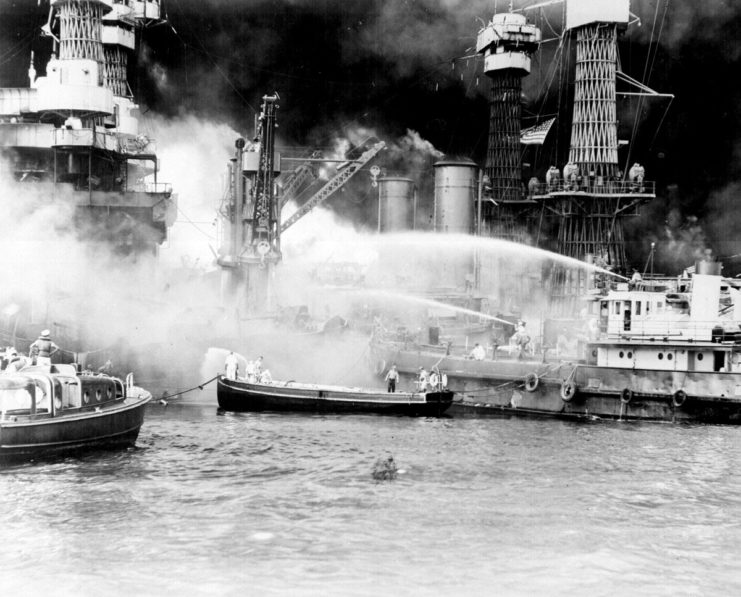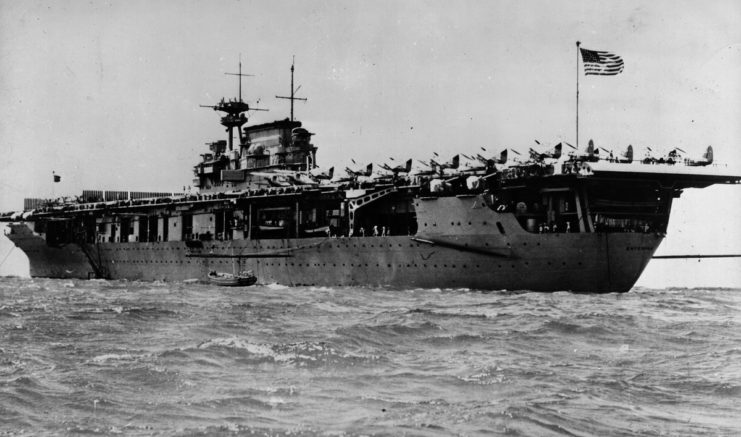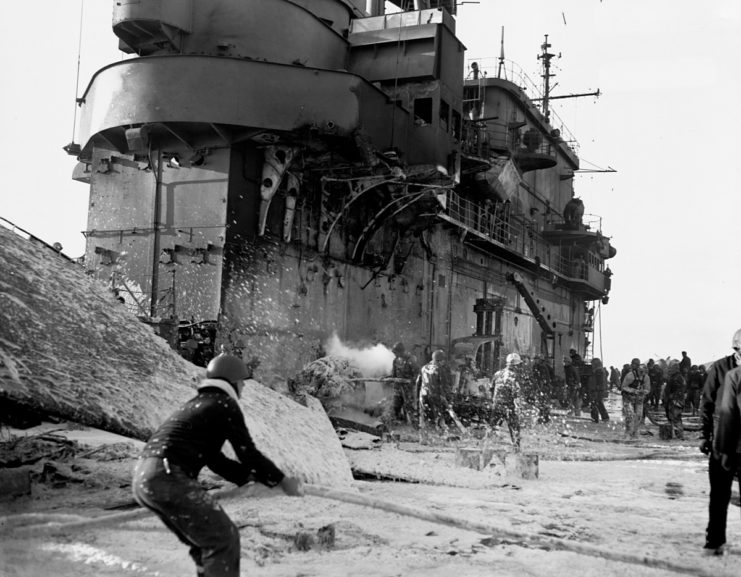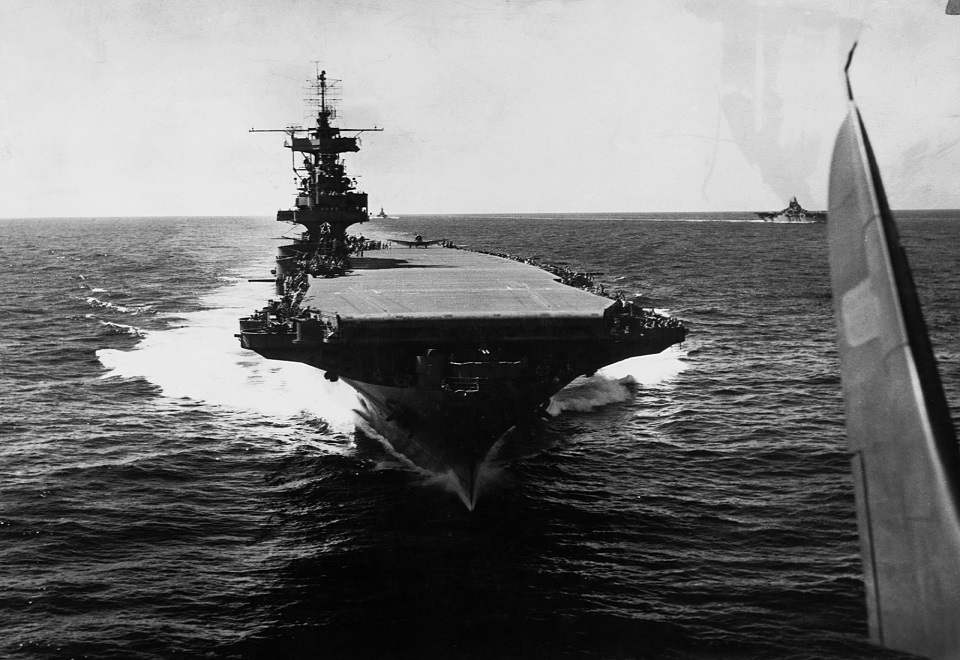On December 7 1941 Japan carried out a vicious attack on the United States’ major naval base at Pearl Harbor. The attack was a preemptive action to wipe out the bulk of the US Pacific Fleet and succeeded in damaging all eight battleships present, four of which were sunk. However, one of the main assets of the Pacific Fleet was absent that day; the aircraft carriers. By pure coincidence all three of the US carriers were out on missions when the attack occurred.
The destruction left by the Japanese attack was immense, with all eight battleships at the harbor being either heavily damaged or sunk, as well as damaging another three destroyers and three cruisers. US servicemember deaths numbered over 2,300.

Japan failed to destroy the US aircraft carriers but they were not too worried, as they predicted that battleships would still be the decisive weapons they were in the past. However, the carriers that they spared would come to be their undoing, as they were the tools used to chase the Japanese across the Pacific.
One of the carriers that were meant to be at Pearl Harbor on the day that would live in infamy was the USS Enterprise. In the month before the attack, Enterprise, commanded by Vice Admiral William Halsey Jr. was sent on a top-secret mission across the Pacific to Wake Island.
“Bull” Halsey was one of the classic hard-nosed leaders that fought for the US during WWII. He started the war as a vice admiral and ended it as a fleet admiral, one of only four people to attain this rank in the US Navy.
A secret mission to Wake Island

Although the assault on Pearl Harbor is one of history’s most famous sneak attacks, the deteriorating relationship between Japan and the US was no secret.
In the weeks leading up to the attack on Pearl Harbor, tensions between the US and Japan were high, and the US was concerned that Japan would launch an attack on their territory somewhere in the Pacific. Intelligence at the time suggested that this attack would occur on Wake Island and would be a surprise, a technique they had used many times before.
Wake Island had recently been reinforced by a Marine Corps garrison, but this would not be able to hold off a large-scale attack. Because of this, Admiral Kimmel assigned Halsey on a top-secret mission in November 1941. He was to ferry reinforcements to Wake Island’s Marines.
To make the journey, Halsey took Enterprise, nine destroyers, and three heavy cruisers. The vessels were designated “Task Force 8.”
Naturally, the US did not want Japan to know about the mission, so Halsey had to make it to Wake Island without being discovered. This was a tough task, as it is closer to Tokyo than it is to Hawaii.
Halsey was expecting war, so Task Force 8 would sail to Wake Island under war conditions. His aircraft was armed, his ships prepared their guns and his men stood at the ready. There wasn’t supposed to be any civilian shipping between Pearl Harbor and Wake Island, so Halsey told his men to “sink any shipping sighted, shoot down any plane encountered.”
Halsey was fully prepared to kick off a war between the US and Japan himself. When he was questioned on who would take responsibility for starting a said war, he proclaimed, “I’ll take it! If anything gets in my way, we’ll shoot first and argue afterwards.”
Halsey and his war-ready task force reached Wake Island without detection on December 4, offloaded their cargo, and began the return journey home.
Enterprise is spared
The task force was scheduled to arrive back at Pearl Harbor on December 6, which, unknown to them at the time, would have meant Enterprise was sitting pretty when Japan attacked the next day.
However, Task Force 8 encountered a storm on their return trip, which slowed them down and split a destroyer’s seam, adding to the delay even more. Because of this, the group would not reach Pearl Harbor until 7:30 on December 7 at the very earliest. The ships were then delayed again while refueling, bumping their arrival even further to midday.
Because of these random occurrences, the vessels in Task Force 8 were not present when Japan attacked Pearl Harbor, allowing them to fight another day. This would come back to haunt the Japanese, as Enterprise would go on to battle them through the Pacific. By the war’s end, she had collected 20 battle stars and was the US’ most decorated ship, having destroyed almost 1,000 aircraft and sunk 71 vessels.

The Japanese announced that they had sunk her three times, with Enterprise coming back each time, earning her the name “The Grey Ghost.”
